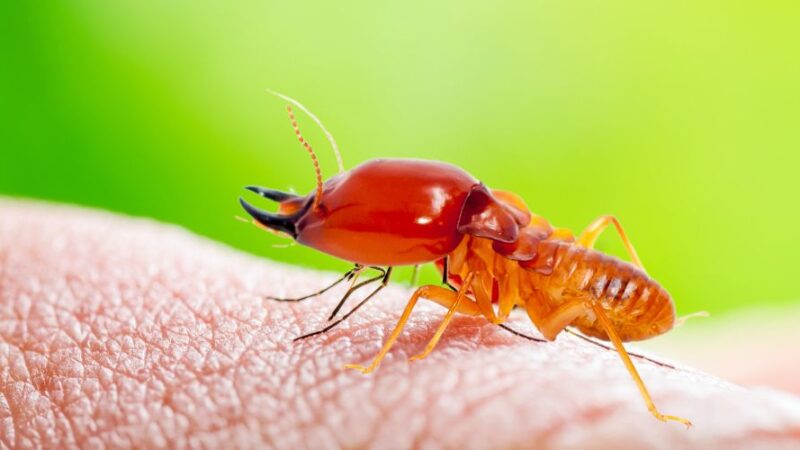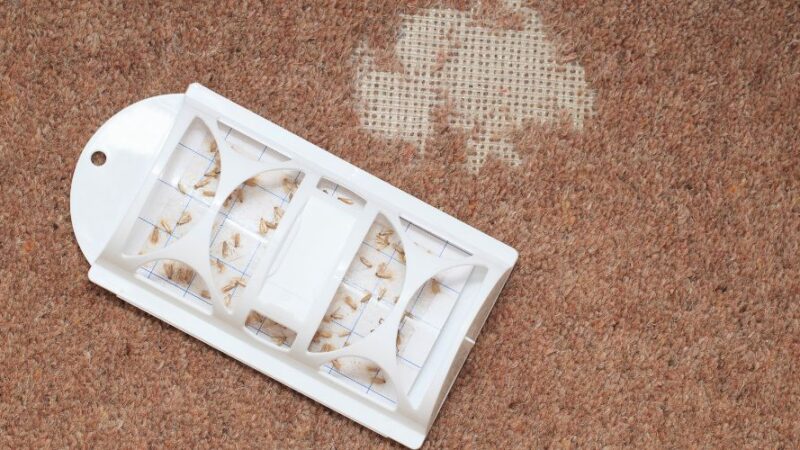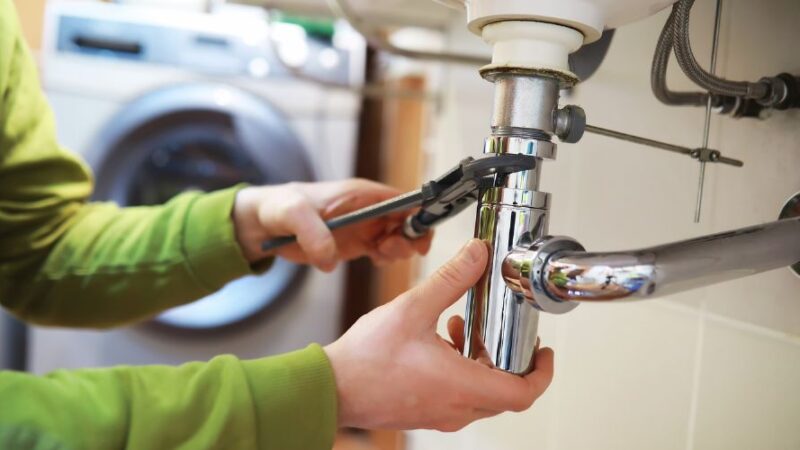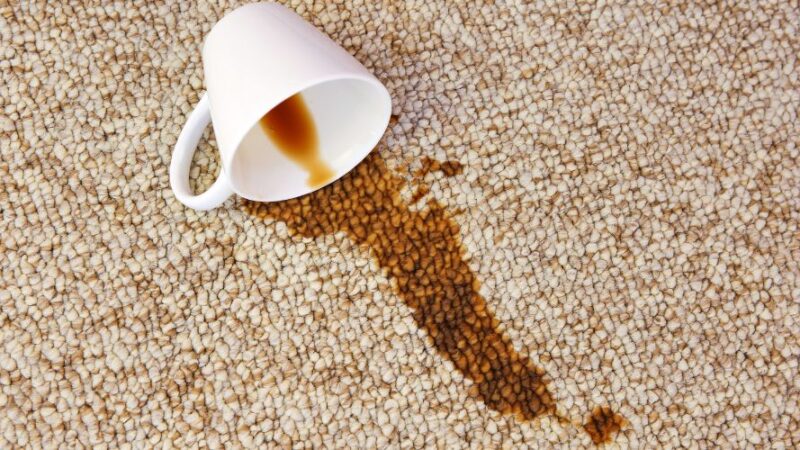Expert Guide on How to Get Rid of Termites in Home
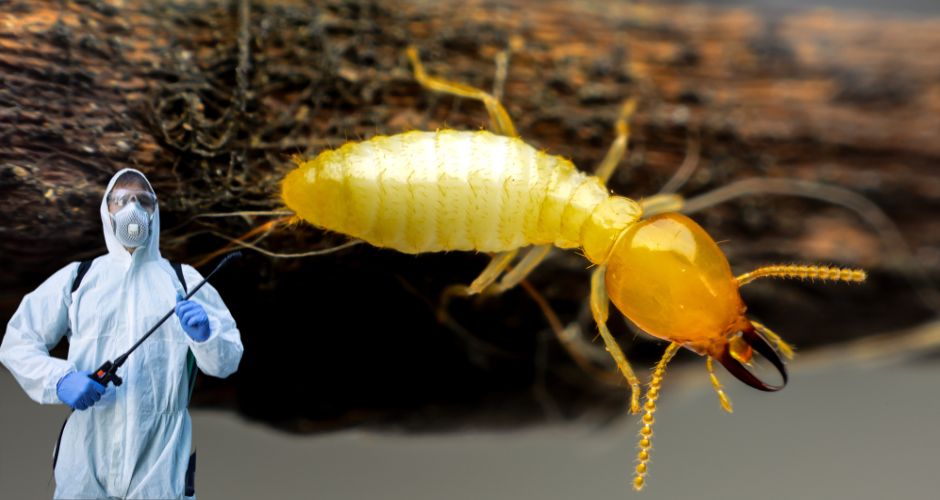
Termite infestations can swiftly turn into a homeowner’s worst nightmare. These tiny yet destructive pests can cause extensive damage to your property if left unchecked. But fret not!
In this Expert Guide on how to get rid of termites in the home, we’ll unveil the secrets to effectively dealing with termites in your house, garden, and even those pesky critters inside the house. We’ll explore how to treat termite damage in wood and discover how long it takes to tackle a termite infestation head-on. So, let’s roll up our sleeves and get ready to bid those termites farewell for good!
Signs and Symptoms of Termite Infestation
Termites can infest your home and cause significant damage before you even notice their presence. To protect your property from these insidious pests, it is essential to recognize the signs and symptoms of a termite infestation. Here’s what to look out for:
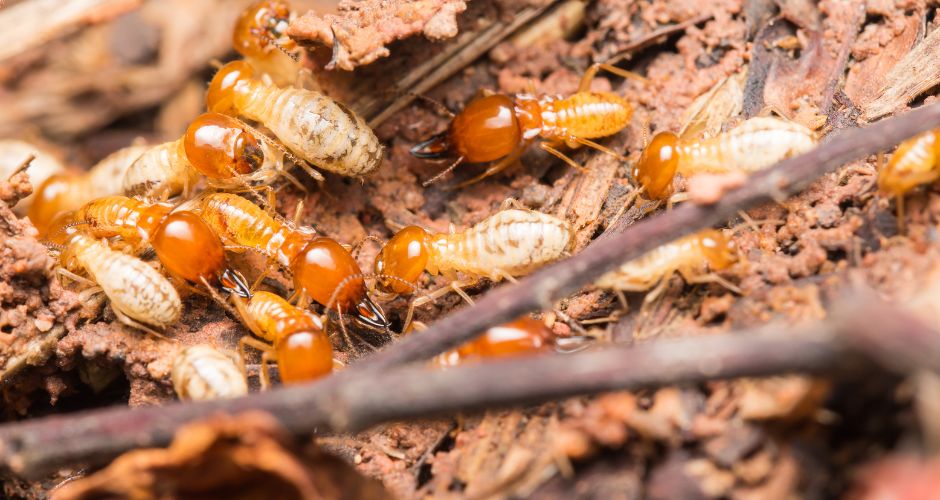
Mud Tubes
One of the most common signs of termite infestation is the presence of mud tubes on the foundation, walls, or wooden structures. Subterranean termites construct these tubes to provide a protected pathway from their nest to their food source.
Hollow-Sounding Wood
When you tap or knock on wooden surfaces, and they produce a hollow, papery sound, it’s a potential indicator of termite activity. Termites consume wood from the inside, leaving a thin veneer on the outside.
Discarded Wings
During certain stages of their life cycle, termites develop wings. After a termite swarm, you may find discarded wings near doors, windows, or other entry points. This indicates that termites have entered your home.
Piles of Frass
Subterranean termites excrete tiny, pellet-like faeces known as frass. If you notice small piles of frass near wood or entry points, it’s a sign of an active termite infestation.
Damaged or Blistered Wood
Termites can cause wood surfaces to appear blistered or damaged. The wood may also appear uneven or distorted, which is a clear sign of infestation.
Tight-Fitting Doors and Windows
If your doors and windows suddenly become difficult to open or close, it could be due to termite damage. As termites consume wooden structures, they can cause warping and interference with these fixtures.
Tunnels in Wood
Inspect wooden structures for small tunnels or galleries within the wood. Termites create these tunnels as they feed on the cellulose in the wood.
Increased Swarming Activity
Termite swarms typically occur in the spring when reproductive termites venture out to establish new colonies. Increased swarming activity near your home is a strong indicator of a termite presence.
Sagging Floors and Ceilings
Advanced termite damage can lead to sagging floors and ceilings due to structural weakening. If you notice these signs, it’s essential to address the infestation immediately.
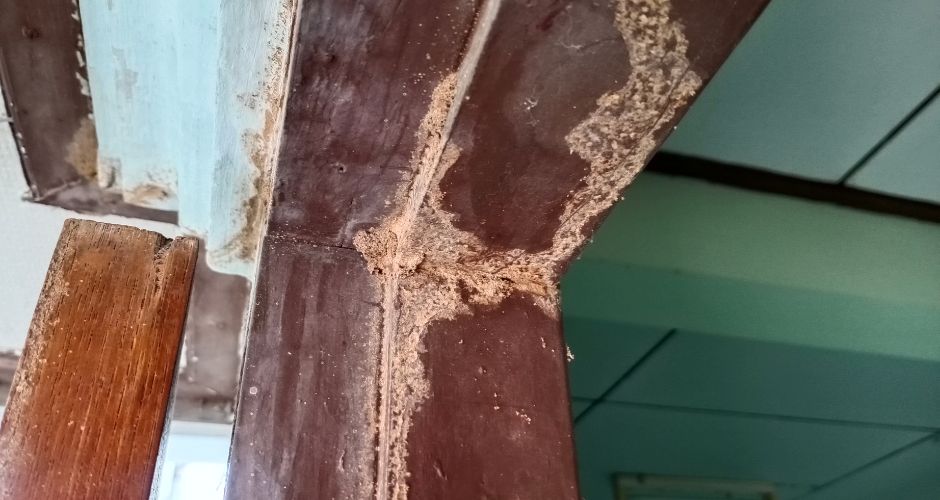
Termite Infestation in Different Areas
Termites are relentless pests that can infest various areas of your home and surroundings. To effectively combat termite infestations, it’s crucial to understand how these destructive insects can target different locations. Here’s an insight into termite infestations in various areas and the specific solutions required:
Termite Treatment for Wooden Furniture
Wooden furniture is a prime target for termites, especially if it’s made from untreated or moisture-damaged wood. To treat termite infestations in wooden furniture, consider the following steps:
- Isolate the Infested Furniture: Quarantine infested pieces to prevent the spread of termites.
- Inspect and Identify Infestation: Identify termite-damaged areas on the furniture.
- Freeze Treatment: You can place the furniture in freezing temperatures for several days to kill termites. Then, slowly thaw it to avoid cracking.
- Chemical Treatment: Apply termiticides or contact a professional pest control service.
Termite Control for House Foundation
Termites can infiltrate your home’s foundation, leading to structural damage. Here’s how to address termite infestations in your house’s foundation:
- Soil Treatment: Apply termiticides to the soil around your foundation as a preventive measure.
- Bait Stations: Install bait stations around the perimeter to monitor and intercept termites.
- Professional Inspection: Periodically schedule professional inspections of your home’s foundation to catch infestations early.
Termite Treatment for Garden and Landscape
Termites can also target your garden, landscape, and outdoor structures. To protect these areas, consider the following steps:
- Mulch Awareness: Avoid using mulch close to your home, as it can attract termites.
- Regular Inspection: Inspect wooden structures, garden beds, and trees for signs of termites.
- Termiticide Application: Apply termiticides around wooden garden structures to deter termites.
Termite Control for Commercial Buildings
Commercial properties, just like homes, are susceptible to termite infestations. To address termite issues in commercial structures:
- Regular Inspections: Schedule routine inspections by pest control professionals.
- Preventive Measures: Apply preventive treatments such as soil termiticides and bait stations.
- Awareness Training: Educate employees about termite prevention and early detection.
Prevention and Protection against Termites
Termites are notorious for their ability to wreak havoc on homes and structures. To protect your property from termite damage, it is crucial to implement preventative measures and protection strategies. Here is a comprehensive guide on how to prevent termite infestations and safeguard your home:
Regular Inspections
Frequent termite inspections serve as your primary defence. These inspections can be conducted by homeowners or performed by professional pest control experts. Examine signs of termite activity, such as mud tubes, damaged wood, or discarded wings. Early detection is key to averting extensive damage.
Maintain Proper Ventilation
Adequate ventilation in your home’s foundation and crawl spaces helps in keeping these areas dry. Termites thrive in moist environments, so reducing humidity levels makes your home less attractive to them.
Eliminate Moisture Sources
Promptly repair leaky pipes, faucets, and other water-related issues. Termites are drawn to water sources, so resolving moisture problems is critical for prevention.
Proper Drainage
Ensure your home has efficient drainage systems in place to redirect rainwater away from the foundation. Poor drainage can lead to excess moisture buildup, which attracts termites.
Remove Dead Trees and Stumps
Dead trees and tree stumps in your yard are inviting to termites. Have them removed promptly to reduce the risk of termites spreading to your home.
Termiticide Application
Consider applying termiticides as a preventative measure. These chemical barriers can be applied around your home’s foundation to deter termites from approaching.
Use Termite-Resistant Building Materials
When constructing or renovating your home, choose termite-resistant materials whenever possible. These materials are less appealing to termites and can provide long-term protection.
Keep Wood Away from Soil
Prevent wooden structures or firewood from contacting the ground. Termites can easily move from the soil to the wood, making it essential to maintain separation.
Remedies for Termite Infestation
When it comes to termite infestations, you don’t always have to resort to harsh chemicals or professional services. Mother Nature provides us with several remedies to protect your home. Here are some natural ways to fend off these pesky invaders:
Neem Oil
Neem oil serves as a natural pesticide capable of deterring and eliminating termites. By mixing neem oil with water and applying it to areas prone to termite infestations, you make the environment unappealing for termites. This natural solution is remarkably effective.
Orange Oil
Orange oil contains an active ingredient capable of eliminating termites upon contact. You can directly apply orange oil to termite-infested areas or use it as a preventive measure. This method is both eco-friendly and safe.
Diatomaceous Earth
Diatomaceous earth is a fine, powdery substance harmless to humans and pets but lethal for termites. Upon contact, the diatomaceous earth dehydrates termites, leading to their demise. You can sprinkle it around your home’s foundation or directly onto termite colonies.
Cardboard Traps
Termites are drawn to cellulose, a component found in wood and cardboard. Placing wet cardboard traps near termite activity can attract them. Once termites infest the cardboard, you can dispose of it along with the captured pests. This method is particularly useful for monitoring termite presence.
Beneficial Nematodes
Beneficial nematodes, microscopic roundworms, act as natural termite controllers. They are parasitic to termites, entering their bodies and releasing bacteria that kill the pests. Application of beneficial nematodes in your garden and outdoor areas can help in keeping termites at bay.
Termite Control Methods
Termite control is a critical aspect of homeownership, as these small yet destructive pests can cause significant damage if left unchecked. Fortunately, various termite control methods are available to safeguard your property. Here, we explore these methods to help you make informed decisions when it comes to protecting your home:
Baiting System for Termite Control

Termite baiting systems are an effective and environmentally friendly approach to control termite infestations. These systems use cellulose material containing slow-acting toxicants. When termites feed on the bait, they carry it back to the colony, effectively spreading the poison. Here’s how baiting systems work:
- Bait Stations: These are strategically placed around your property, creating a protective barrier.
- Monitoring: Regular monitoring of bait stations helps in the early detection of termite activity.
- Bait Application: Once termites are detected, the bait is replaced with a toxic version.
- Colony Elimination: Over time, this method can eliminate the termite colony.
Liquid Termite Treatment
Liquid termiticides are another common method of termite control. They involve applying a liquid chemical barrier around your property, creating a protective zone that termites cannot breach. Here’s how liquid termite treatment works:
- Trenching and Treated Zones: A trench is dug around the foundation, and the soil is treated with liquid termiticides.
- Soil Saturation: The chemicals penetrate the soil, creating a protective barrier that lasts for several years.
- Professional Application: It’s crucial to hire a professional for liquid treatment to ensure it’s done correctly.
Termite Heat Treatment
Termite heat treatment is an innovative method that utilizes high temperatures to eliminate termites. Here’s how it works:
- Heating the Structure: Specialized equipment is used to raise the temperature inside the infested area to a level that is lethal to termites but safe for your property.
- Even Distribution: The heat is evenly distributed throughout the space to ensure all termites are exterminated.
- No Residue: Unlike chemical treatments, heat treatment leaves no residual chemicals behind.
Termite Barrier Installation
Termite barriers can be either physical or chemical and are installed during construction or as a retrofit. These barriers create a barrier that termites cannot pass. Here are the two main types:
- Physical Barriers: These are physical materials, like stainless steel mesh, that termites cannot penetrate.
- Chemical Barriers: Applied to soil or building materials, they repel or kill termites on contact.
How much does it cost to treat a termite infestation?
The cost of treating a termite infestation can vary widely depending on several factors. These factors include the extent of the infestation, the type of termites involved, the treatment method chosen, and your location. Here are some cost considerations to keep in mind:
- Extent of Infestation: The size and severity of the termite infestation play a significant role in determining the cost. Smaller, localized infestations are generally less expensive to treat than larger, widespread ones.
- Type of Termites: Different termite species may require specific treatment methods. For example, subterranean termites often require different treatments compared to drywood termites, and the costs can vary accordingly.
- Treatment Method: There are various treatment methods available, as discussed in the previous sections. The cost can differ depending on whether you choose natural remedies, chemical treatments, or professional services. Chemical treatments may cost more, especially if extensive fumigation is necessary.
- Property Size: The size of your property and the areas affected by the infestation will impact the cost. Treating a large house or a commercial building may be more expensive than treating a small residential property.
- Location: Regional differences in the cost of living and local pest control prices can influence the overall cost. Urban areas tend to have higher treatment costs compared to rural regions.
Hiring Professional Termite Control Services
Dealing with a termite infestation is not a task for the faint-hearted. These silent destroyers can cause significant damage to your property if left unchecked. That’s why it’s often best to leave the job to the professionals when it comes to termite control. Here’s why choosing professional pest control services is your best line of defence:
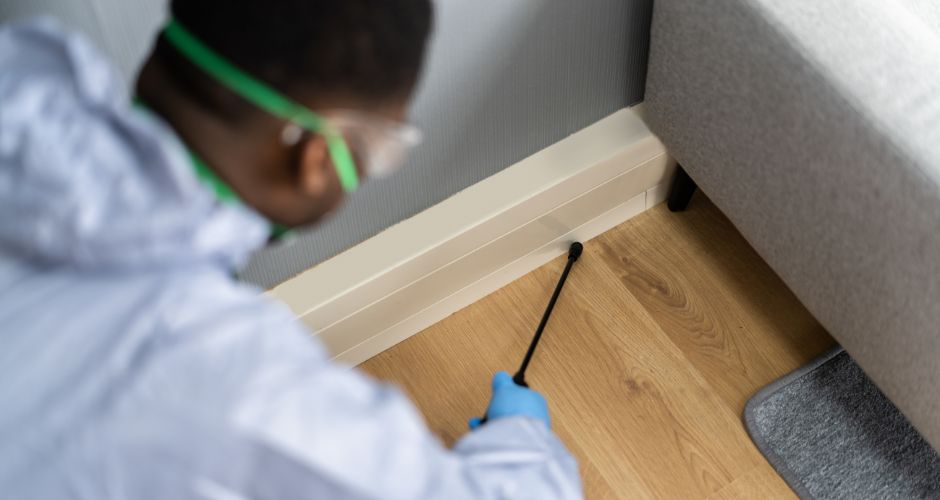
Expertise and Experience
Professional termite control services have the knowledge and experience to identify the type of termites infesting your property and the extent of the infestation. This information is crucial in determining the most effective treatment plan.
Tailored Solutions
One size does not fit all in termite control. Professionals can provide a customized solution based on your property’s unique needs. They’ll consider factors like the type of termites, the construction of your home, and the extent of the infestation.
Access to Effective Treatment Methods
Professional pest control companies have access to a range of treatment methods that are not available to the average homeowner. These methods are often more effective at eradicating termites and preventing future infestations.
Regular Inspections
Professional services can set up regular inspection schedules to ensure your property remains termite-free. This proactive approach can catch infestations early and prevent extensive damage.
Safety and Environmental Concerns
Pest control professionals are trained to use termite treatments safely and are well-versed in environmental regulations. They will ensure that treatments are applied with minimal risk to humans and pets and in compliance with local regulations.
Time and Stress Savings
Dealing with a termite infestation can be time-consuming and stressful. Professional services can take the burden off your shoulders and provide peace of mind, knowing that experts are handling the issue.
Prevention Advice
In addition to treating existing infestations, professionals can provide guidance on prevention, helping you take steps to reduce the risk of future termite problems.
Conclusion
Termite infestations are a serious concern for homeowners, but with the right knowledge and actions, you can protect your property from these silent destroyers. Whether you choose natural remedies, chemical treatments, or professional services, the key is to act promptly and maintain vigilance.
By implementing preventive measures and recognizing the signs of termite activity, you can keep your home termite-free. When faced with an infestation, don’t hesitate to seek professional assistance, as their expertise and specialized treatments are your best line of defence. With expert guide on how to get rid of termites in the home, you can ensure the long-term protection of your home and property against termite damage.
Recomended
Bedbugs: Symptoms, Treatment and Removal

